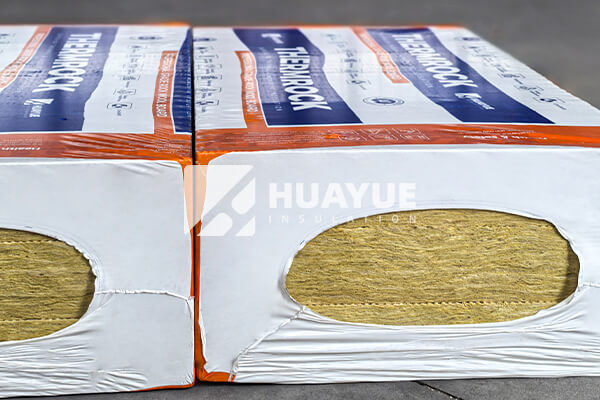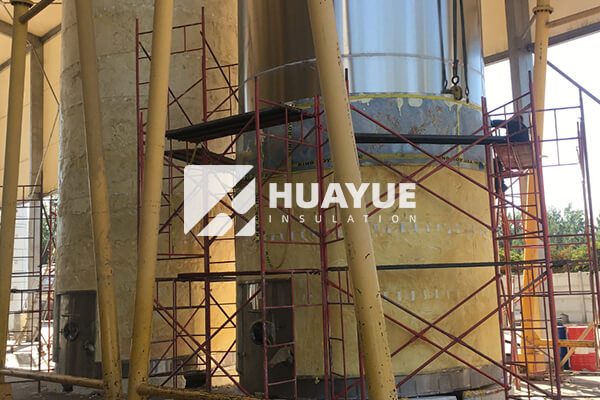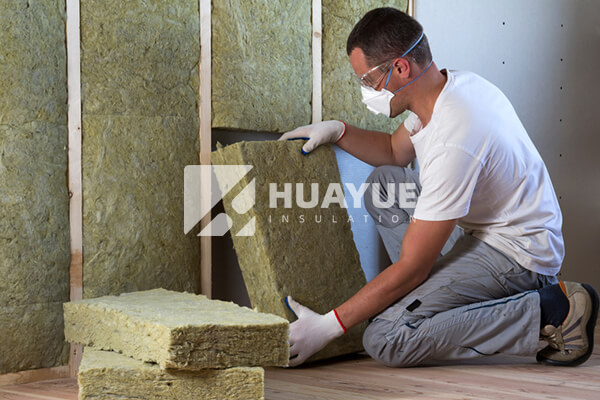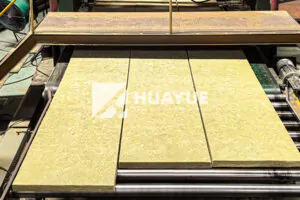How Effective Is Mineral Wool Soundproofing for Industrial Tanks?
Noise pollution can be a big problem in manufacturing facilities, especially near large tanks. Many engineers want to know if mineral wool can make a real difference in sound control.
Mineral wool reduces noise by trapping sound waves in its dense fibers, making it a top choice for industrial soundproofing. It performs well in high-temperature and chemical environments, helping create safer, quieter spaces.

I have seen how industrial tanks generate noise that can affect daily operations and nearby communities. Many of my colleagues and clients ask for better solutions to control sound. I always recommend looking at mineral wool. It is tough, fire-resistant, and helps reduce unwanted noise. Let us explore more about its performance in real-life settings.
Is Mineral Wool Soundproof?
Noise inside and around tanks leads to safety and comfort problems. Everyone wants a solution that works. Mineral wool stands out because it combines thermal insulation with reliable soundproofing properties.
Mineral wool soundproofing works by absorbing and scattering sound waves in its fiber structure. It can reduce transmission of airborne noise and impact sounds, creating a quieter operation area. Many engineers use mineral wool for its proven effectiveness.

Mineral wool does not block all sound, but it absorbs much of it. Its fibers slow sound energy, turning it into heat inside the insulation. That makes it different from materials that simply reflect sound. The Structure of mineral wool is dense and non-directional, so sound waves get caught from many angles. This is important in large facilities where noise comes from different sources. I have seen it used in chemical plants and large storage tanks, where workers are concerned about noise and safety. Mineral wool’s fire resistance is especially valued in these settings, offering both safety and sound control. Compared to open-cell insulation, it stands up to moisture and chemicals, which means it lasts longer and keeps performing. When talking to engineers and plant managers, I point out that good soundproofing can also mean less stress for workers and smoother facility operations.
Is Glass Wool Better Than ROCK WOOL for Soundproofing?
Customers often ask if glass wool is more effective than ROCK WOOL. Both materials have strong reputations, but their structures and properties differ.
ROCK WOOL usually delivers better sound reduction than glass wool. Its higher density allows it to absorb sound more effectively, especially low-frequency noises. For harsh, noisy environments, ROCK WOOL is often the preferred choice.

There are good reasons why ROCK WOOL performs better than glass wool in many soundproofing applications. ROCK WOOL is made from volcanic rock, which creates a dense, fibrous mat. This density helps it trap and dissipate sound better than lighter glass wool. In a real-world test, I observed ROCK WOOL insulation reduce machine noise levels more consistently than glass wool. Glass wool is lighter and easier to handle, but it cannot match ROCK WOOL’s noise reduction performance at lower frequencies. Below is a table summarizing some key differences:
| Feature | Glass Wool | ROCK WOOL |
|---|---|---|
| Material | Fiberglass | Stone wool |
| Density | Medium | High |
| Sound Absorption | Good | Very Good |
| Low-Frequency Sound | Moderate | Excellent |
| Fire Resistance | High | Very High |
Choosing between glass wool and ROCK WOOL depends on the application and sound frequencies you need to control. For tanks and heavy equipment, I recommend ROCK WOOL for tough noise problems.
Is Mineral Wool Better Than Spray Foam for Soundproofing?
Spray foam is sometimes used for insulation and sound reduction. People want to know how it compares to mineral wool.
Mineral wool absorbs and dampens noise better than spray foam. Its dense fiber structure stops sound waves, making it the stronger choice for soundproofing in most industrial settings.
Spray foam can fill gaps and create an airtight seal, reducing some sound transfer. However, its closed-cell nature mainly blocks air, not sound. Mineral wool’s fibers slow sound waves and trap noises, reducing echoes and voices in facilities. In my experience, engineers pick mineral wool when noise control is a higher priority than energy efficiency. The following table shows how the two materials compare:
| Feature | Spray Foam | Mineral Wool |
|---|---|---|
| Structure | Closed cell/rigid | Fibrous/mat |
| Sound Absorption | Low to moderate | High |
| Air Sealing | Excellent | Moderate |
| Fire Resistance | Lower | High |
| Application Ease | Easy (sprayed) | Easy (batts/panels) |
Mineral wool gives reliable soundproofing in tough tank environments. Spray foam works for air sealing and temperature control, but cannot match mineral wool’s ability to absorb noise. My clients rely on mineral wool for better worker comfort.
How Much Does ROCK WOOL Reduce Sound?
Engineers need precise data about how much sound ROCK WOOL can block or absorb.
ROCK WOOL reduces sound transmission by 45-52 decibels, depending on thickness and installation. This noise reduction is enough to lower loud industrial noises to safe levels in many tank applications.
The actual performance depends on installation and the specific product. For example, installing ROCK WOOL at a thickness of 100mm can remove over 50 decibels. This change is dramatic in areas with heavy machinery and constant noise. I have measured significant differences after upgrading tanks with thick ROCK WOOL panels. Below is a typical summary:
| Thickness (mm) | Noise Reduction (dB) |
|---|---|
| 50 | 45 |
| 75 | 48 |
| 100 | 52 |
These figures mean operators and engineers can expect quieter workplaces and fewer distractions. Better sound control translates to improved safety and concentration during long shifts.
Conclusion
Mineral wool, especially ROCK WOOL, provides top soundproofing for industrial tanks. Its performance, durability, and fire safety make it a strong choice for quieter, safer facilities.
You may also be interested in:
Ready to Get Started?
Get in touch with our experts for personalized solutions tailored to your needs.
Get Free QuoteLatest Articles

Glass Wool Fire Rating: How Safe Is Your Insulation?
Dec 25, 2025
Let's Work Together
Ready to take your business to the next level? Get in touch with our team of experts and let's discuss how we can help you achieve your goals.
Get Free Solutions






